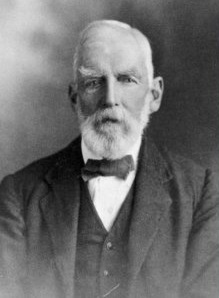James Cox (labourer) facts for kids
James Cox (born October 11, 1846, in Chiseldon, England; died July 19, 1925, in Greytown, New Zealand) was an English office worker who later became a flax worker and farm labourer in New Zealand. He is well-known today because he kept a very detailed diary about his life.
James grew up as the son of a successful small farmer. He worked as a clerical assistant for the Great Western Railway Company. In 1880, when he was 34 years old and still living with his mother, his mother sold the family farm. After this, James decided to move from England to New Zealand.
Contents
Life in New Zealand
James Cox first lived in Christchurch, New Zealand until 1888. After that, he moved to the North Island of New Zealand. There, he found work in a flax mill. Flax is a plant used to make strong fibers.
A Difficult Life
The flax mill where James worked closed down in 1890. After that, life became very hard for him. He often struggled to find work and money. He became what was known as a "swagman," which meant he traveled around, carrying his belongings, looking for temporary jobs. These jobs were often tough and paid very little. James lived a life of poverty and moved from place to place. He was buried in a grave without a headstone, but in 2013, a headstone was placed for him at Greytown Cemetery.
James Cox's Diary
After 1888, James Cox started writing a very detailed diary. The part of his diary that still exists today is huge, with about 800,000 words! This diary is incredibly important because it gives us a rare and valuable look into the daily life of working-class people in New Zealand during that time.
The Diary's Impact
James Cox's diaries have been used by historians to understand the past. In 1995, a book called Nearly Out of Heart and Hope was written by Miles Fairburn, based on Cox's diaries. The diaries were also shown in a special exhibition called "Logs to blogs" in 2013. This exhibition was held at the Alexander Turnbull Library in Wellington, New Zealand.
Family Connections
James Cox was related to a famous nature writer named Richard Jefferies. They were cousins. When they were teenagers, James and Richard went on an adventure together. They first planned to walk all the way to Moscow, but that didn't work out. Then, they tried to sail to America, but that also proved impossible.


